Here are some of the models on display for the 2011 Rocky Mount Shipwrights Rocklers exhibit.
HMS Beagle
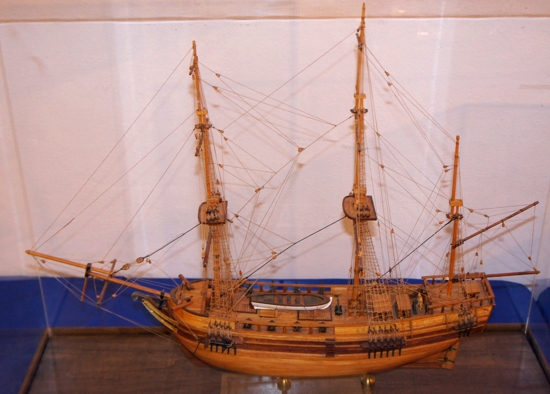
HMS Beagle was a10-gun brig-sloop of the Royal Navy. She was launched on 11 May 1820. In July of that year she took part in a fleet review celebrating the coronation of King George IV of the United Kingdom in which she was the first ship to sail under the new London Bridge. She was adapted as a survey barque and took part in three expeditions. On the second survey voyage the young naturalist Charles Darwin was on board, and his work would eventually make the Beagle a most famous ship.
Period: mid-19th Century Model length: 27”, height: 21” Scale: 3/16”= 1ft.
Oseberg Viking ship
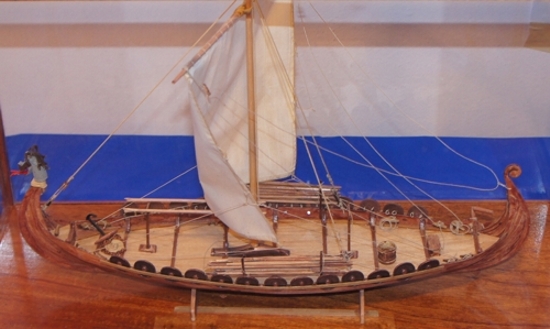
The original ship was built in 815AD and was used as a burial ship after 20 years of icoastal trading. It was discovered on an Oseberg, Norway farm in 1904. It has been restored and can be seen today at the Viking Ship Museum in Oslo. The ship was 71 feet long, 17 feet wide. The mast was 40 feet tall and carried a 30feet wide, 15 feet long sail. Square homespun wool was used for the sail. The squares were sewn together with strips of leather. There are 15 oar holes on each side. The rudder was an enlarged oar fitted on the aft starboard side.
Period: 815-834, now restored Model length: 17”, height 10” Scale:1:50
Seguin – Jim Blackwell
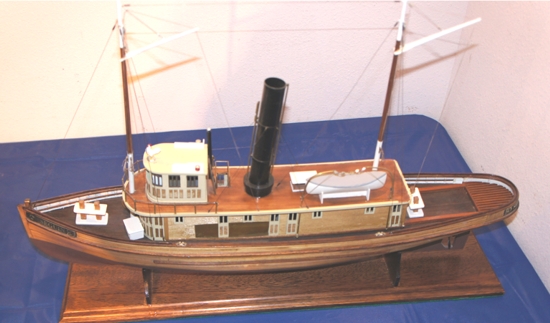
The Seguin was built in Maine in 1884. She spent her first years towing sailing vessels in the Kennebec River and barges along the Atlantic Coast. In the early 1900’s, she became a New York harbor tug. She was retired in 1967.
Period: 1884-1967 Model length: 26” Scale: 1/4”=1ft.
Laura S
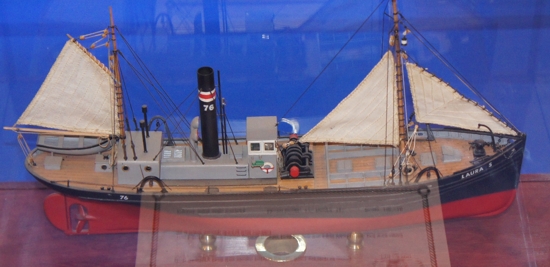
The Laura S was steam fishing trawler built before the First World War, but was used as a mine sweep during that conflict.
Period: early 20th Century
Model length: 17”, height: 11”
Scale: 1/8”=1ft.
PT 109 42 EP
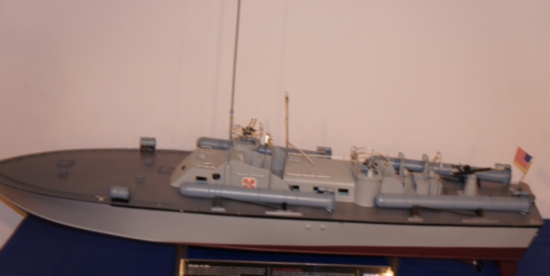
PT (short for “Patrol Torpedo”) Boats of World War Two were called “Devil Boats” by the Japanese, and “the mosquito fleet” by the sailors who manned them. They were fast, elusive and harassed Japanese supply ships as well as smaller war ships. They were small (30-75 tons) and fast (35-40 knots).
Period: WW II
Model length: 40”
Scale: not provided
Norske Love
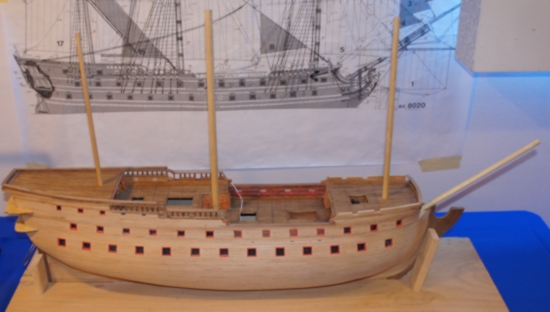
The Norske Love was built in Copenhagen, Denmark in 1764-1767. It was named after the Norwegian Royal Coat of Arms. Her ornaments represented daily life in Norway. It was mostly a guard ship in Danish waters. She carried 70 cast iron cannons and a crew of 667 sailors and soldiers. She was converted to a shelter for homeless in 1795. In 1798 she was deleted from the naval registry. The model is based upon original construction drawings.
Period: last half of 18th Century
Model length: 40”, height: 36”
Scale: 1:64
USS Cairo

The Cairo was an iron-clad river gunboat in the Union’s Western Gunboat Fleet before becoming a Navy gunboat.. She served in several battles on the upper Mississippi River. She was sunk by a mine on the Yazoo River in 1862. The Cairo was recovered from the river bed in 1964and partially restored. She is on display today in the Vivksberg Military Park.
Period: American Civil war
Model length: 26”, width: 13”
Scale: 1/8”=1 ft.
Tug Boats
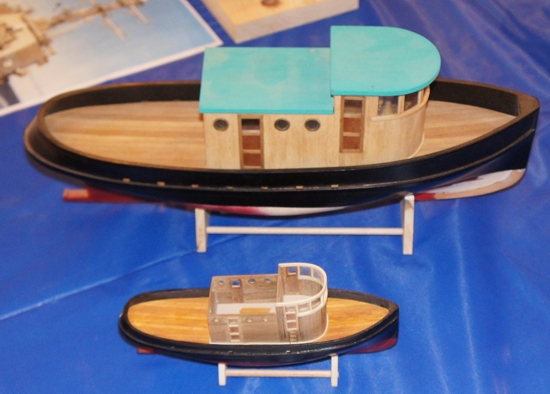
Jon Sorensen built these two models of hardwood, one exactly 50% scale of the other. These tug boats, though generic, represent tugs that operated in harbors at the beginning of the 20th Century.
Period: Early 1900’s
Larger model: 14” long
Scale: not given
Santa Maria
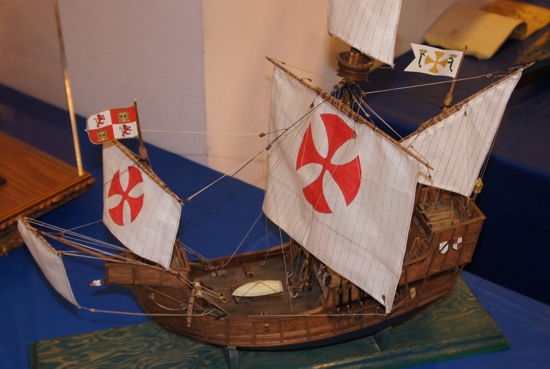
The Santa Maria was Columbus’ flagship when he landed in the New World. She was three-masted and square-rigged, about 85 feet in length with a crew of forty. Top speed was eight knots, cruising speed of four knots. She ran aground on Christmas Eve, 1492, off the coast of Haiti.
Period: 1492
Model length: 21”, height: 16”
Scale:1:65
Regenia S
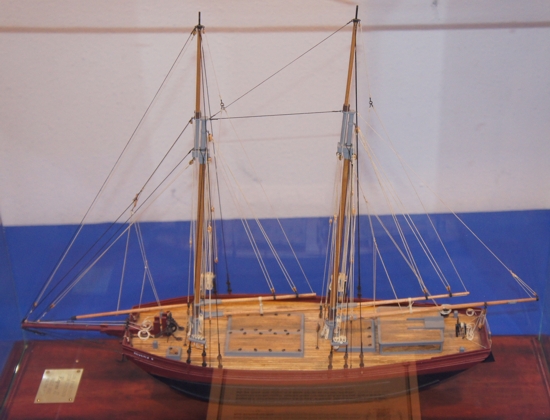
Regenia S was a San Francisco Bay scow schooner. She was built in 1893. Sailing scows like the Regenia S were the “trucks” of the bay before there were roads and bridges to transfer cargos. Hundreds like her were built for the bay. There is only one left, the Alma. This schooner is about 120 years old and still sails.
Period: turn of the 20th Century
Model length: 24”, 19” high
Scale: 3/16”= 1ft.
Niagara
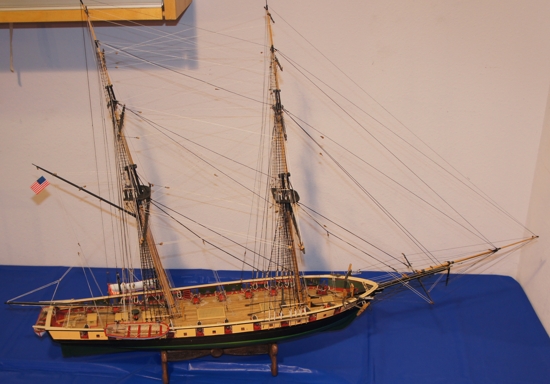
Niagara was Commodore Perry’s second flagship during the Battle of Lake Erie on September 10, 1813. After the War of 1812 ended, Niagara served as a station ship in Erie until 1820. She was then scuttled in Misery Bay. In 1813, the ship carried a crew of 155 officers and men, and was armed with eighteen 32-pounder carronades and two long 12-pounders.
Period: War of 1812
Model length: 43”, height: 27”
Scale: 3/16”=1 ft.
HMS Victory – Cross section
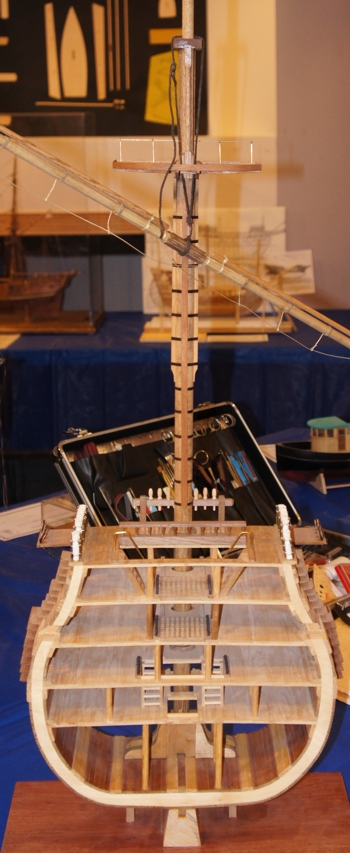
HMS Victory is a 104-gun first-rate ship of the line of the Royal Navy, laid down in 1759 and launched in 1765. She is most famous as Lord Nelson’s flagship at the Battle of Trafalgar in 1805. Finally her active career ended on 7 November 1812, when she was moored in Portsmouth Harbour off Gosport and used as a depot ship. In 1922 she was moved to a dry dock at Portsmouth, England, and preserved as a museum ship. She continues to be flagship of the Second Sea Lord and is the oldest naval ship still in commission.
Period: 1765-1812 and on
Model is 60” tall
Scale:1:5
Whale Boat
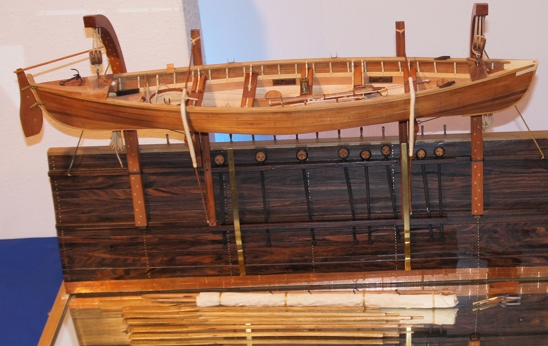
In whaling, it was important to be able to launch these small boats (usually about 26-feet long), three or four at a time. So the davits and the arrangements for launching were made for quick launches by the seven-man crews of each boat.
Period: 1840-1910
Model is 2-inches long
Scale: 1”= 13ft.
USS Maine
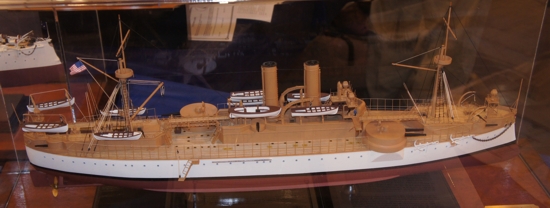
The USS Maine (ACR-1) was the United States Navy’s second commissioned pre-dreadnought battleship, although she was originally classified as an armored cruiser. She is best known for her catastrophic loss in Havana harbor on February 15, 1898. Maine had been sent to Havana, Cuba to protect U.S. interests during the Cuban revolt against Spain.
Period: 1890’s
Model size: 38” long, 14” tall
Scale: 3/32”=1ft
